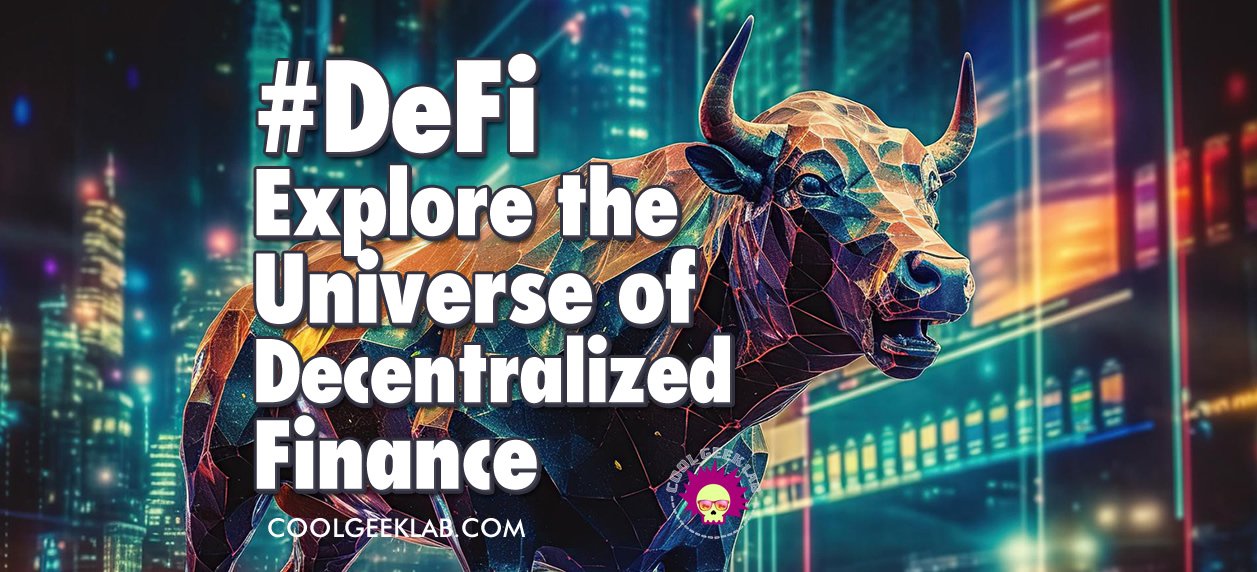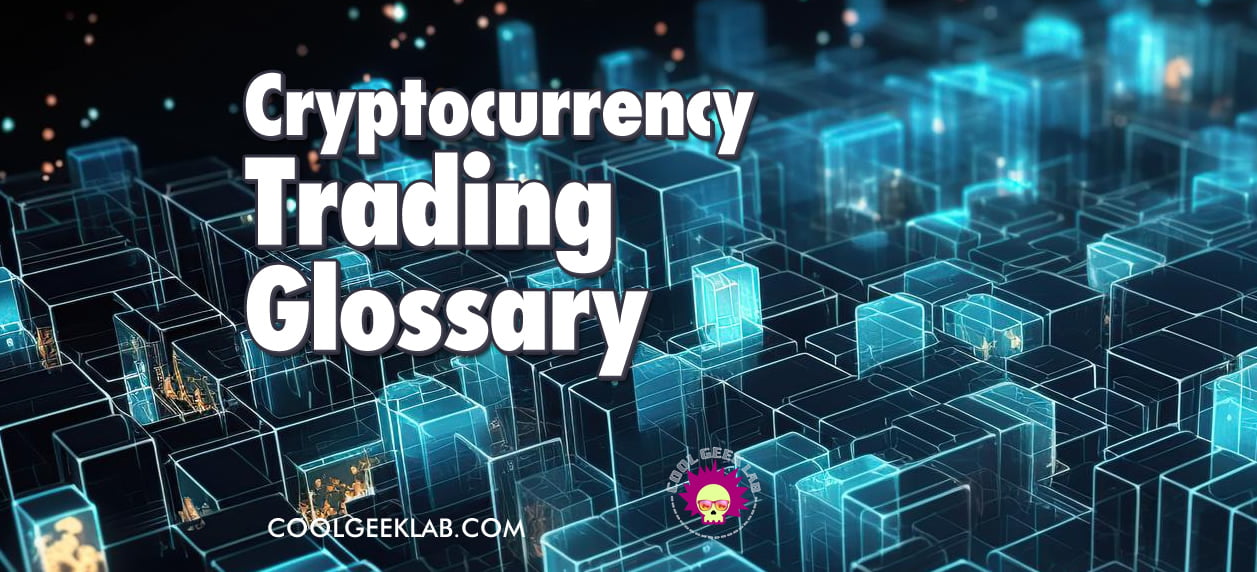In recent years, the financial industry has witnessed a seismic shift in its traditional landscape, and at the epicenter of this transformation is the concept of Decentralized Finance, or DeFi. This revolutionary approach to financial services is challenging the conventional norms of banking and investment, offering a decentralized alternative built on blockchain technology. In this comprehensive exploration, we'll delve into the intricacies of DeFi, understanding its core components, and unraveling the profound reasons why it matters on a global scale.
Table of Contents
Defining DeFi
At its core, DeFi refers to a set of financial services and applications that operate on a decentralized blockchain, with Ethereum being the predominant platform. What distinguishes DeFi from traditional finance is its departure from centralized intermediaries, such as banks, in favor of smart contracts—self-executing agreements coded directly onto the blockchain. These smart contracts facilitate and automate various financial transactions, fostering a trustless and transparent ecosystem.
Key Components of DeFi
- Decentralized Exchanges (DEX):
- Centralized exchanges have long been the gateway to cryptocurrency trading, but DeFi introduces a paradigm shift with decentralized exchanges. These platforms enable users to trade cryptocurrencies directly without relying on a central authority, enhancing user control and mitigating the risks associated with centralized exchanges, such as hacking and manipulation.
- Lending and Borrowing Protocols:
- DeFi platforms offer decentralized lending and borrowing protocols powered by smart contracts. Users can lend their cryptocurrencies and earn interest or borrow assets by providing collateral. The automation of these processes through smart contracts enhances efficiency and transparency, redefining the borrowing and lending landscape.
- Stablecoins:
- The volatility of cryptocurrencies has been a longstanding challenge, hindering their use as a reliable medium of exchange. DeFi addresses this issue with stablecoins—digital assets pegged to a stable value, often tied to traditional fiat currencies. Stablecoins provide the necessary stability for day-to-day transactions within the DeFi ecosystem.
- Yield Farming and Liquidity Mining:
- Incentivizing user participation is a cornerstone of DeFi, and mechanisms like yield farming and liquidity mining play a crucial role. Users can earn additional tokens by providing liquidity to decentralized exchanges, fostering community engagement and participation. This innovative approach encourages users to actively contribute to the liquidity of the ecosystem.
Why DeFi Matters
- Financial Inclusion:
- One of the most profound impacts of DeFi is its potential to usher in a new era of financial inclusion. By removing the need for traditional identification processes, DeFi opens up financial services to the unbanked and underbanked populations worldwide. Accessible to anyone with an internet connection, DeFi democratizes finance and empowers individuals who were previously excluded from traditional banking systems.
- Reduced Intermediary Risk:
- DeFi eliminates the reliance on intermediaries like banks, significantly reducing counterparty risk and eliminating the threat of a single point of failure. Users retain greater control over their assets, minimizing the chances of fraud and manipulation. This decentralized approach aligns with the ethos of blockchain technology, where trust is established through code rather than through centralized entities.
- Global Accessibility:
- Traditional finance often grapples with geographical and bureaucratic barriers, limiting access to financial services. DeFi operates on a global scale, providing financial services to anyone with an internet connection. This borderless nature not only transcends geographical constraints but also promotes financial inclusivity on a global level.
- Innovation and Experimentation:
- The decentralized nature of DeFi encourages innovation and experimentation. Developers can build and deploy financial applications without the need for permission, leading to a rapid evolution of the financial landscape. This environment of creativity and exploration is fostering groundbreaking developments that have the potential to reshape the future of finance.
DeFi: Interesting Facts and Stats
Decentralized Finance, or DeFi, is a term that refers to financial services and products that are built on and replicated by an unregulated, decentralized blockchain infrastructure. DeFi uses cryptocurrencies to function, but aims to exclude financial intermediaries or governments from the equation. In other words, DeFi is a way of providing access to financial services to anyone with an internet connection, without relying on centralized authorities or intermediaries.
DeFi is an emerging market that has grown rapidly in the past few years, especially in 2022 and 2023. Despite the challenges posed by the bear market, regulatory uncertainty, and security breaches, DeFi has shown remarkable resilience and innovation. In this article, we will explore some of the interesting facts and stats about DeFi and its technology and opportunities.
DeFi Market Size and Growth
- According to DefiLlama, the total value locked (TVL) in DeFi across multiple blockchains stands at nearly $42 billion as of December 29, 2023. This is a sharp drop from the year's peak of $166.7 billion in January 2023, reflecting the impact of the market downturn and the loss of confidence in some DeFi protocols due to hacks and exploits.
- However, the TVL in DeFi does not capture the full picture of the market size and growth of DeFi, as it only measures the amount of assets locked in smart contracts, not the amount of transactions or users. A more comprehensive metric is the market capitalization of DeFi governance tokens, which represent the ownership and voting rights of various DeFi protocols. According to CoinGecko, the total market cap of governance tokens in the DeFi ecosystem is over $100 billion as of March 2023.
- The DeFi market is expected to grow at a compound annual growth rate (CAGR) of 42.5% until 2030, reaching $45.33 billion by then, according to a report by Markets and Markets. The report cites the increase in venture capital funding, the greater adoption of blockchains for payments, and the blockchain solutions in banking and cybersecurity as some of the key drivers of DeFi growth.
DeFi Adoption and Usage
- Ethereum remains the king of DeFi, as it hosts over 90% of the TVL in DeFi as of March 2023. Ethereum is also the most popular blockchain for developing and deploying DeFi applications, as it offers a robust smart contract platform, a large developer community, and a wide range of interoperable protocols and standards.
- However, Ethereum also faces some challenges, such as high gas fees, network congestion, scalability issues, and environmental concerns. These have led to the emergence of alternative blockchains that aim to offer faster, cheaper, and greener solutions for DeFi. Some of these include Binance Smart Chain (BSC), Solana (SOL), Polygon (MATIC), Avalanche (AVAX), Terra (LUNA), and Fantom (FTM). These blockchains have attracted significant amounts of TVL and users in 2022 and 2023, as they offer lower barriers to entry and higher returns for DeFi participants.
- MetaMask, DeFi's most popular non-custodial wallet, boasts over 30 million users and 21 million monthly active users as of December 2022. This represents an increase of 3,800% since 2020. MetaMask allows users to interact with various DeFi protocols across different blockchains from a single interface. MetaMask also offers a mobile app and a browser extension that make it easy to access DeFi from any device.
- According to Nansen.ai, the number of unique addresses that either bought or sold a DeFi asset worldwide reached over 10 million in November 2023. This shows that DeFi is attracting more users from different regions and backgrounds. However, this number is still a small fraction of the total number of cryptocurrency users, which is estimated to be over 300 million by Statista. This indicates that there is still a lot of room for growth and adoption for DeFi.
DeFi Segments and Opportunities
- DeFi can be divided into several segments based on the type of financial service or product they offer. Some of the main segments are:
- Decentralized exchanges (DEXs): These are platforms that allow users to trade cryptocurrencies without intermediaries or custodians. Some examples are Uniswap (UNI), SushiSwap (SUSHI), PancakeSwap (CAKE), Serum (SRM), Curve (CRV), Balancer (BAL), etc.
- Lending platforms: These are platforms that allow users to borrow and lend cryptocurrencies with interest rates determined by supply and demand. Some examples are Aave (AAVE), Compound (COMP), Maker (MKR), Cream (CREAM), Venus (XVS), etc.
- Payments platforms: These are platforms that allow users to send and receive cryptocurrencies across different blockchains or networks. Some examples are Terra (LUNA), Polygon (MATIC), Fantom (FTM), xDai (STAKE), etc.
- Asset management platforms: These are platforms that allow users to invest in various DeFi strategies or products, such as yield farming, liquidity mining, index funds, etc. Some examples are Yearn.finance (YFI), Harvest Finance (FARM), Badger DAO (BADGER), Index Coop (INDEX), etc.
- Insurance platforms: These are platforms that allow users to protect themselves from various risks in DeFi, such as smart contract bugs, hacks, exploits, etc. Some examples are Nexus Mutual (NXM), Cover Protocol (COVER), Opyn (OPYN), etc.
- Each of these segments offers different opportunities and challenges for DeFi users and developers. Some of the opportunities include:
- Higher returns: DeFi offers higher returns than traditional finance, as it eliminates intermediaries and leverages the power of smart contracts and algorithms. For example, the average annual percentage yield (APY) for lending USDC on Aave is 5.6%, while the average APY for a savings account in the US is 0.06% .
- Greater access: DeFi offers greater access to financial services to anyone with an internet connection, regardless of their location, identity, or credit history. For example, anyone can borrow or lend cryptocurrencies on DeFi platforms without going through KYC or credit checks.
- More innovation: DeFi offers more innovation and experimentation than traditional finance, as it allows anyone to create and launch new financial products or services without permission or regulation. For example, DeFi has enabled the creation of novel concepts such as flash loans, synthetic assets, algorithmic stablecoins, etc.
- Some of the challenges include:
- Higher risks: DeFi involves higher risks than traditional finance, as it exposes users to various threats such as hacks, exploits, scams, rug pulls, etc. For example, the largest DeFi exploit of 2022 was the Ronin bridge exploit, which resulted in losses of 173,600 ETH and 25.5 million USDC, worth over $625 million at the time.
- Lower usability: DeFi involves lower usability than traditional finance, as it requires users to have a certain level of technical knowledge and experience to interact with complex and unfamiliar interfaces and protocols. For example, users need to understand concepts such as gas fees, slippage, impermanent loss, etc.
- Uncertain regulation: DeFi involves uncertain regulation than traditional finance, as it operates in a legal gray area that may change depending on the jurisdiction and the interpretation of the authorities. For example, some countries may ban or restrict the use of cryptocurrencies or DeFi platforms, while others may impose taxes or reporting requirements on them.
Case Studies: Real-World Impact of DeFi
- Microfinance on the Blockchain:
- DeFi has facilitated the development of microfinance platforms on the blockchain, providing small loans to entrepreneurs in regions where traditional banking infrastructure is lacking. This has the potential to uplift local economies and empower individuals to start and grow their businesses.
- Remittances and Cross-Border Transactions:
- DeFi is transforming the landscape of remittances and cross-border transactions. By leveraging decentralized platforms, users can send and receive funds across borders with reduced fees and faster transaction times compared to traditional banking channels.
- Decentralized Autonomous Organizations (DAOs):
- DAOs, enabled by DeFi, are organizations run by smart contracts, allowing for decentralized decision-making and governance. This innovative structure not only enhances transparency but also empowers community members to actively participate in the decision-making processes of the organization.
Challenges and Risks
While DeFi holds immense promise, it is not without its challenges and risks. Security vulnerabilities, regulatory uncertainties, and the potential for smart contract exploits are among the concerns that need to be addressed for the sustained growth of the DeFi ecosystem. As the space matures, regulatory frameworks are expected to evolve to strike a balance between innovation and investor protection.
Conclusion
DeFi represents more than just a technological advancement; it symbolizes a fundamental shift in the way we perceive and engage with finance. Its decentralized, transparent, and inclusive nature has the potential to redefine the global financial landscape. As DeFi continues to evolve and mature, its impact on traditional finance will be transformative, unlocking new opportunities and possibilities for individuals around the world. Whether it's providing financial services to the unbanked, reducing reliance on intermediaries, or fostering innovation, DeFi is poised to shape the future of finance in ways we are only beginning to comprehend.
DeFi is a fascinating and fast-growing sector that has the potential to revolutionize the way we access and use financial services. DeFi offers higher returns, greater access, and more innovation than traditional finance, but also involves higher risks, lower usability, and uncertain regulation. DeFi is still in its early stages of development and adoption, and faces many challenges and opportunities ahead. As DeFi matures and evolves, it will likely become more mainstream and accessible to a wider audience.
As we navigate this decentralized frontier, the journey promises to be as revolutionary as the destination.




